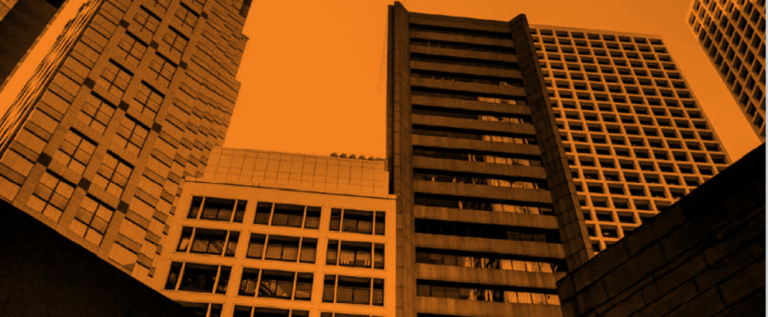Giving the reasons for vertical expansion of Indian cities, Nakul himatsingka, managing Director - ideal group said, “City development had opened up issues of shrinking space. The vertical extension has provided solution in terms of more space, multilevel parking and reduced pollution level at a height with low noise pollution and a feel of fresh air. Many Indian cities have buildings which are more than 60 storeys while, Mumbai and Delhi NCR have more than 100 story buildings. In fact, architects and developers wherever possible are bringing ease of commuting through skywalks connecting buildings at height.”
Sebi joseph, President, otis india stated, “Simply put, tall buildings need a solution to effectively manage pedestrian traffic. Otis’ CompassPlus® addresses this need. It uses data and smart technology to improve the passenger experience by reducing wait times and offering a faster and more efficient passenger journey. The system does this by evaluating real-time passenger traffic to improve flow and travel times in busy mid- and high-rise buildings.”
DESIGNERS RESPONSE OR LACK THEREOF
There are many new technological advancements happening in elevator design that empower architects to create new forms and shapes of large-scale developments. However, industry reports point out a general absence of emphasis on detailed elevator specifications at initial building planning stages in India.In Nilesh Dongre, vertical head, Developer Spaces, edifice consultants opinion, the awareness has increased manifold, in today’s time. “Previously, an architect would go about with a basic calculation of the number of elevators required, but now, when high density projects are considered, we have simulating software which can actually project the performance of elevators in a given design. The importance of vertical transportation is well understood and there is growing emphasis on this discipline. National Building Code specifies the quality of service and other norms pertaining to elevator design. However, it does not cater to dynamic situations, like multiple transition points, lobbies, and locations.”When the building is tall the complexity is exponential. High-rise elevator systems demand meticulous capacity analysis and detailed simulation including building design, its population & peak demands, elevator configuration and physical and/or dynamic zoning. Yet, the elevator consultant, if at all employed, tends to be selected on the lowest cost basis rather competency and knowledge. The elevator traffic design has to commence at building’s conceptualisation stage. If the building core is finalised with incorrect number of hoist ways or incorrect sizing or incorrect location, there is no remedy available through the life of the building.
Tak Matthews, Principal consultant, TAK Consulting Private Limited considers the required awareness amongst architects, developers and for that matter even within the elevator industry low. “The majority opinion is that less than 25% buildings in India would have a robust design basis for elevatoring. It is a fact that elevatoring is mostly established to thumb rules or to suit FSI compulsions, while specifications are based on cost priorities of the purchase team than the requirements of the building.”There are several parameters which need to be studied before working out elevator specifications. The waiting time, handling capacity, peak hours traffic requirement, inter-floor traffic movement etc. need to be decided in consultation with the owner/promoter and elevator agency/consultant.
Presenting an optimistic view, Manish Mehan, Ceo, thyssenkrupp elevator (India) said, “What bodes well for the elevator industry is the quick acceptance of the latest technologies not only by architects and consultants, but also users. Property developers, architects, engineers and end-users in India are now embracing the latest elevator technology and features.”
Rajnikant Lad, Founder, elevator Auditor explained, “The best approach is to involve the elevator agencies / consultants at the drawing board stage. The dissatisfaction of the users as regards elevator performance can be the result of the miss-match of the elevator system, which further can be assigned to lack of interaction amongst the owner/ developers, architect and elevator supplier/consultants or change in occupancy plan once the civil drawing is finalised.”
COUNTING THE COST
One of the most significant structural cost drivers of tall buildings is the size and complications of the elevator core. The core’s design and associated cost of construction are also directly impacted by the growing demands of vertical transportation. A higher proportion of lifts with more varied services such as express, double-deck or designated-floor calling are needed in higher towers to service a multitude of floors, spaces, tenants and visitors as efficiently as possible. In India, with all the latest technology and sophistication available to the users, it is the price and services which will play a deciding role in determining the market leader among all elevator manufacturers. “With the low priority attached to elevators, India has been generally slow in adopting technological advancements. Exceptions would be the fast adoption of destination control elevators, MRLs and permanent magnet gearless machines. Otherwise it is the cost priority that drives the technology adoption. For example, despite double deck elevators being available for decades, we are yet to find even one in India despite it being the apt solution for numerous projects,” rued MathewsENVIRONMENT CONSCIOUS MACHINES
Buildings consume about 40% of the world’s energy, and elevators account for 2%–10% of a building’s energy consumption. During peak usage hours, elevators may utilize up to 40% of the building’s energy. In tandem, the need for eco-friendly elevators has also increased. “Green” has become an emerging and dominant design philosophy for elevator companies. Lad stated, “Monospace elevators for space and energy-saving, VVVF drive system for smooth operations and energy saving, flat traction belt in place of steel wire ropes, touch buttons, dispatch control system, wireless communications systems are the effect of eco-friendly approach of the latest technology.”Making a critical observation Mathews said, “With variable frequency drives and higher efficiency machines, energy savings are being optimised. However, the power saving claims need to be taken with a pinch of salt. Incidentally the permanent magnet gearless machine which is supposed to be very energy efficient, probably loses its power saving characteristics a few years after commissioning. Dr. Albert T. P. So from the Hong Kong university is studying this phenomenon. Regeneration is a possibility, however is limited in its full potential, as our power grids do not facilitate maximisation of the regenerated power. We also need to recognise that power that is consumed by the ancillary devices, like car lights, hall position indicators, the display panels, air-conditioning in the lift car and the aesthetic compulsions like glass or marble cladded walls, chandeliers etc that increase the car weight significantly, impacting eco-efficiency. Some companies have been exploring solar power as an option. The solution is not yet commercially available.”
PUSHING THE LIMITS VERTICALLY
The elevator industry is in the midst of many technological advancements and as they say, sky is the limit.Taking a look at the progress made over the years, Rishi Jain, Managing Director, Jain group said, “In 1857, Mr E. Otis demonstrated passenger elevators for the first time at the world’s fair in New York City, he wanted to show the convenience and safety behind using “a vertical cab”. Today, safety, convenient passenger transport, design and the sense of style are gaining equal priority. Machine room less elevators AI enabled energy saving elevators or ECO energy control options are the latest advances that have also got commercial viability in India. I believe, adaptability is an area which needs focus, based on the comfort of the passengers, high speed elevators can adopt a lower speed or based on preferences of operators, the energy consumption can vary at peak & non-peak hours.”
INDIAN MARKET SCENARIO
The Indian Elevator market is growing rapidly and has touched the yearly requirement of more than 60,000 units, with an estimated projection to touch 100,000 units by the year 2025. almost all international elevator players in India, which includes Kone, Schindler, Otis, ThyssenKrupp, Mitsubishi, Hitachi, Fujitech and many more. Many of them have a manufacturing unit in India and some companies are using their Indian unit as their manufacturing hub and are supplying to another part of the globe from here.Looking into the future, Mathews predicted, “The current research that will challenge vertical transportation systems as we know of it today, would be the space elevator. IoT in vertical transportation is also making inroads. The ultimate future of vertical transportation would probably be the development of technology to actually make the “Beam me up Scotty” fantasy a reality. Who knows? Maybe this could be the solution for the so many under elevatored buildings that are coming up.”



















